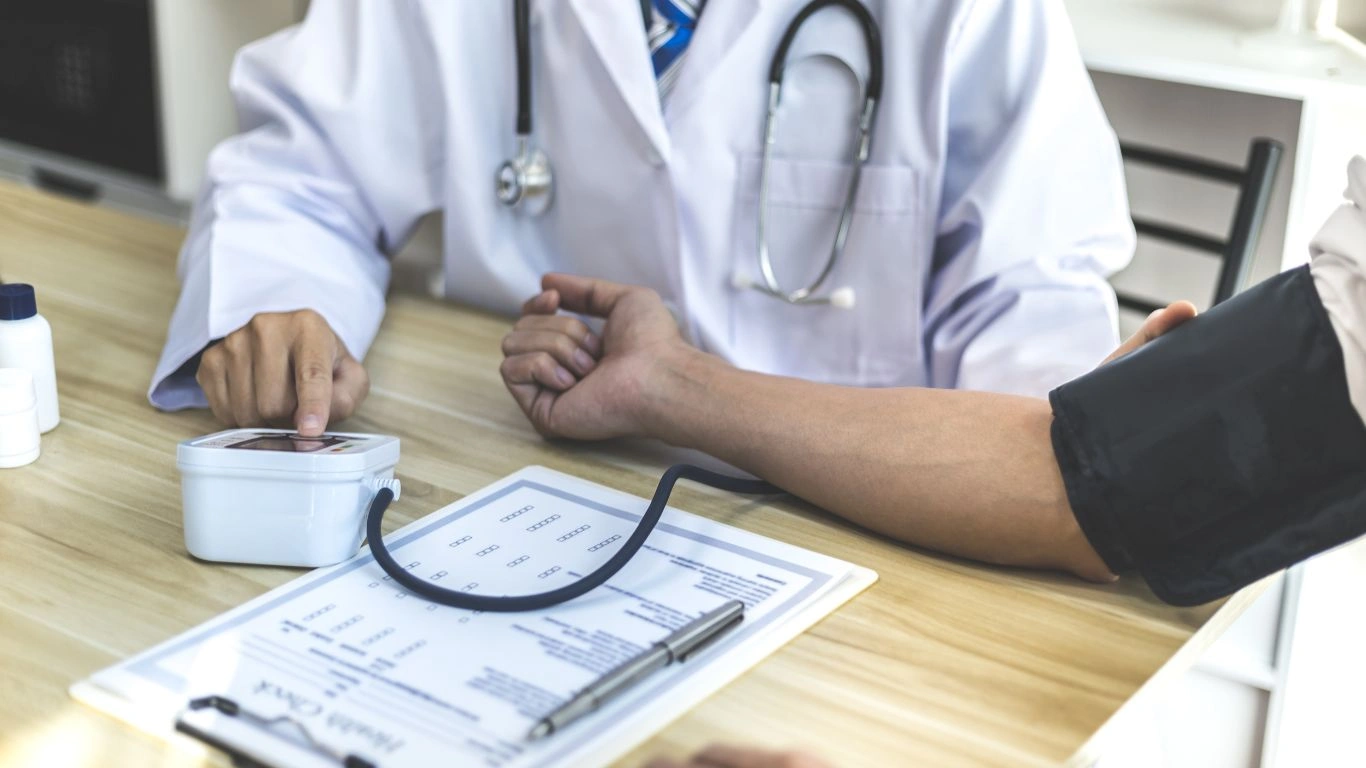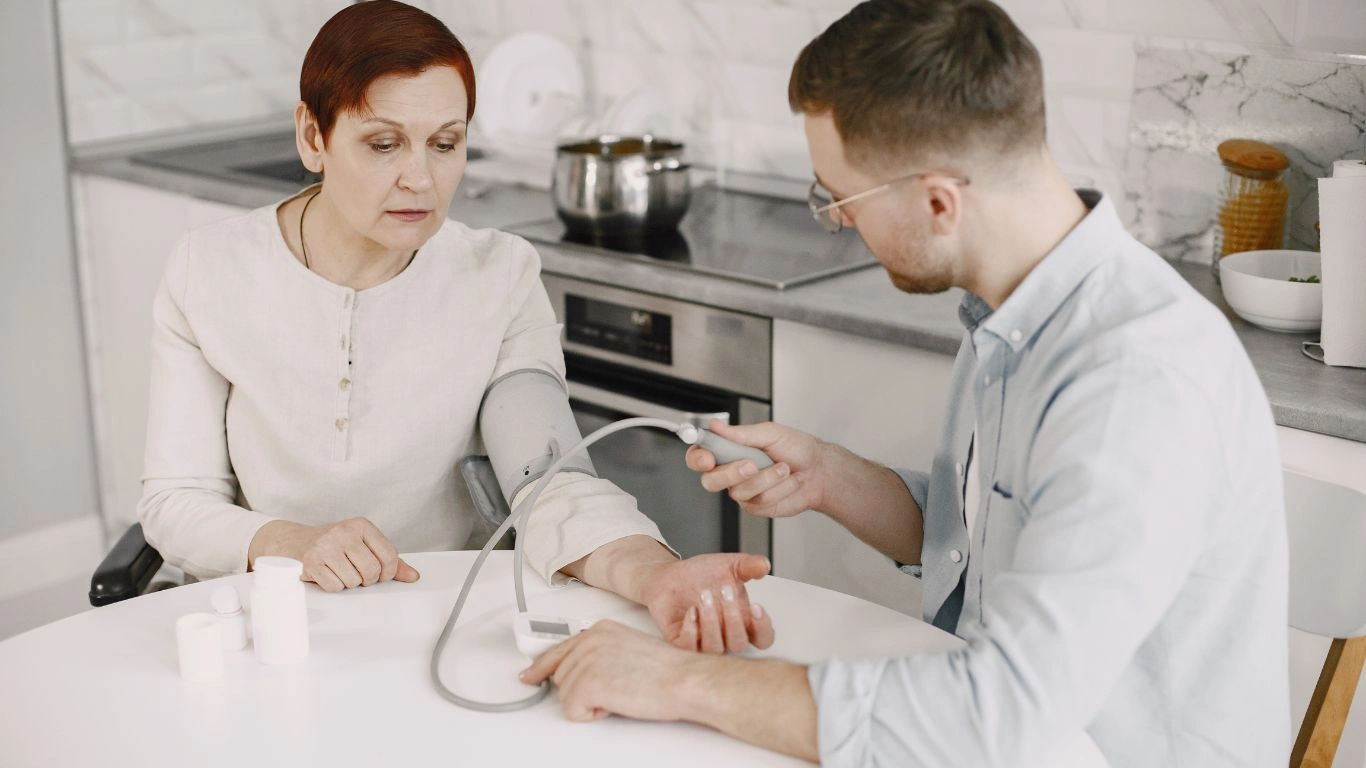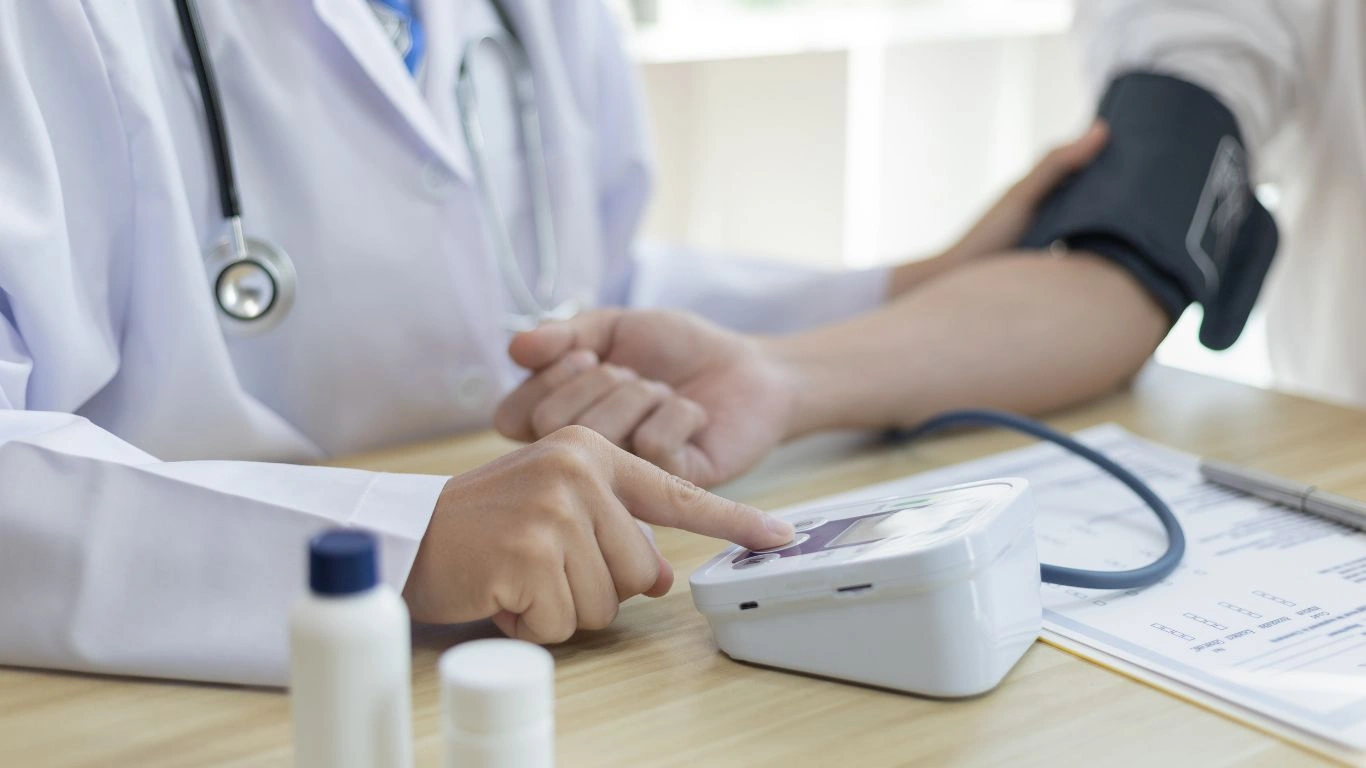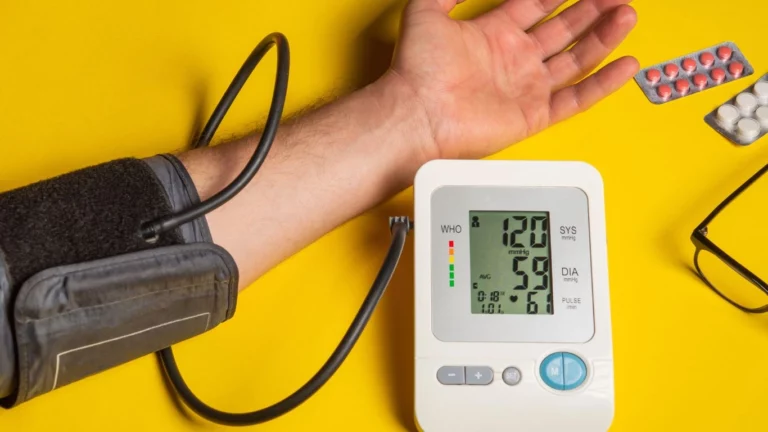Simple BP Monitoring Tips for Beginners That Actually Work
Ever stared at that home blood pressure monitor and thought, “Am I even doing this right?” Trust me, you’re not alone. I’ve had countless patients—smart, health-conscious folks—walk into my office saying, “Doc, my numbers are all over the place!” That’s exactly why I’m writing this. With the rise in self-monitoring, especially for folks managing hypertension, it’s time we unpack some real-world BP monitoring tips for beginners. And yes, we’ll keep it friendly, easy to follow, and sprinkle in a few stories from my own practice.
Why Monitoring Your Blood Pressure at Home Really Matters

Let me be blunt: clinic readings don’t always tell the full story. You might have white coat hypertension (where your BP spikes at the doctor’s office) or masked hypertension (where your BP is normal in the clinic but high at home). That’s where home monitoring shines—it catches patterns we might miss.
For example, one of my patients, a 52-year-old teacher, had “great” BP every visit. But after we started home readings, we saw clear evening spikes. Turned out, his job stress and salt-heavy snacks during late-night grading sessions were the culprits.
So, what makes home monitoring so powerful?
- Early Detection: Catches rising BP before it becomes a crisis.
- Pattern Recognition: Helps identify lifestyle triggers like stress, caffeine, or poor sleep.
- Medication Feedback: You’ll know if that new med is really working.
- Empowerment: You’re not just a patient—you’re part of the care team.
Getting Started: Choosing the Right Monitor

Okay, so you’re ready to start—but staring down a sea of BP monitors online is overwhelming, right? Here’s a quick breakdown from someone who’s helped dozens of patients find their perfect match.
Upper Arm vs Wrist Monitors
Go with an upper arm monitor if possible. They’re more reliable. Wrist monitors can work, but only if used precisely (and most people don’t). Trust me—unless you’re super consistent with positioning, the numbers can be all over the place.
Look for These Features:
- Validation: Make sure it’s clinically validated (check medaval.ie for ratings).
- Memory Storage: Especially useful if you’re tracking trends or sharing data with your doc.
- Large Display: You don’t want to squint at numbers post-coffee.
- Comfortable Cuff: Don’t ignore this—uncomfortable cuffs lead to rushed or skipped readings.
Personally, I recommend brands like Omron or Microlife—they’re consistent, user-friendly, and most models come with Bluetooth for syncing with apps (a bonus if you love data like I do!).
BP Monitoring Tips for Beginners: Getting the Technique Right

This part is where even the most diligent folks get tripped up. Your BP number can shift 10–15 points based on tiny things—like crossing your legs or checking right after a heated phone call.
Here’s the No-Nonsense Checklist I Give My Patients:
- Chill for 5 minutes before checking—seriously, no multitasking.
- Feet flat, back supported, arm at heart level.
- No talking during the measurement (yes, even grumbling about the cuff).
- Use the same arm every time—preferably the left unless told otherwise.
- Avoid caffeine, nicotine, or exercise at least 30 minutes beforehand.
One of my patients, a tech entrepreneur, couldn’t figure out why her readings were inconsistent. Turns out, she was doing them in between Zoom calls—with coffee in hand. Once we fixed that, her numbers made way more sense.
Making Sense of Your Readings (Without Freaking Out)

Now that you’ve nailed the technique, let’s talk about what those numbers actually mean. Because trust me, the moment someone sees 145/92, the panic sets in—especially if it’s their first week of tracking. I’ve had patients text me screenshots with frantic messages like, “Is this stroke level??”
Here’s how I help my patients interpret results:
- Normal: Less than 120/80 mmHg
- Elevated: Systolic 120–129 and diastolic less than 80
- Stage 1 Hypertension: Systolic 130–139 or diastolic 80–89
- Stage 2 Hypertension: Systolic 140+ or diastolic 90+
But here’s the key: Don’t stress over one weird reading. BP naturally fluctuates—due to stress, poor sleep, even hydration. What matters is the trend over time, not one isolated number.
For example, one of my retired patients, bless him, brought in a full notebook of readings. He had one rogue 155/95 on a Monday morning—and was convinced he was headed for a cardiac event. But the rest of the week? Solid 125s and 130s. He was just a little dehydrated and had slept badly that day.
How to Track BP Like a Pro (Without It Taking Over Your Life)

If you’re just starting out, keep it simple. You don’t need a full spreadsheet (unless that excites you, which for some people, it genuinely does!). What you do need is consistency.
Recommended Tracking Routine:
- Check twice daily—once in the morning and once in the evening.
- Take 2 readings each time, one minute apart. Record both.
- Log the date, time, systolic/diastolic numbers, and anything notable (e.g., stress, skipped meds).
And yes, jotting down “argued with spouse before dinner” or “skipped lunch, felt dizzy” is helpful context. These notes help me, as your doc, make sense of any spikes or dips.
Digital logs or apps like Heart Habit, Qardio, or even your monitor’s companion app can be helpful. But if you’re old school and prefer pen and paper? That works too. Just bring it with you during visits—we’ll go over it together.
What If Your Numbers Are Always High?

Let’s say you’re doing everything right—same arm, good posture, rested—and your numbers are consistently elevated. It’s tempting to Google yourself into a panic spiral, but here’s my professional advice: pause and look at the pattern.
Questions I usually ask my patients:
- Are you taking your medications as prescribed—every single day?
- Is your cuff the right size? Too tight or too loose gives false readings.
- Are you monitoring at the same time each day?
- How’s your stress level lately? Any changes at home or work?
- Any new supplements, decongestants, or pain relievers?
Had a lovely patient, mid-40s, whose BP readings jumped unexpectedly. She swore she hadn’t changed anything. After a quick medication review, we realized she’d started using a decongestant for allergies—one notorious for raising BP. Once she switched to a safer alternative, her readings normalized.
Bottom line: Persistent high numbers don’t always mean doom—they just mean it’s time to investigate thoughtfully. And if it turns out you need medication adjustments, that’s okay. Hypertension management is a journey, not a one-and-done fix.
When to Call Your Doctor (And What to Say)

This is something a lot of folks aren’t sure about—so let’s clear it up. Here’s when I want to hear from my patients:
- BP is consistently above 140/90 for a week, despite doing everything right.
- You experience symptoms like chest pain, dizziness, shortness of breath, or blurred vision with elevated BP.
- Your BP is swinging wildly—one reading at 180/100, the next at 115/75.
- New medications or health changes seem to affect your numbers.
When calling or messaging, keep it simple. Include your log, how often you’re checking, any symptoms, and recent changes. The more info we have, the faster we can help you feel better and stay safe.
Honestly, some of the best hypertension outcomes I’ve seen came from patients who regularly shared their readings and stayed engaged. It’s a team effort, and your data helps us tailor care in real-time—not just during a rushed 15-minute visit.
Incorporating BP Monitoring Into Your Daily Routine Without Stress

By this point, you’re probably feeling more confident about checking your BP. But here’s a truth I share with all my patients: tracking your blood pressure shouldn’t take over your life. If it feels like a chore, you’ll be less likely to stick with it. So, how do you make it part of your day in a way that’s manageable and even a little empowering?
My go-to tips for easy integration:
- Pair it with a daily habit: Maybe right after brushing your teeth or your morning coffee. Routine is your best friend here.
- Set gentle reminders: Use your phone alarm, sticky notes, or an app notification, but keep it friendly, not nagging.
- Keep your monitor accessible: Store it somewhere visible—on your bedside table or kitchen counter—to reduce excuses.
- Celebrate your progress: Every consistent check-in is a win. Share your data with your healthcare provider regularly to feel that teamwork vibe.
I recall a patient, a busy mom juggling work and family, who told me, “Doc, I keep forgetting or rushing it.” So we adjusted her routine—now she checks her BP while her kids do morning stretches beside her. She says it’s less of a “task” and more of a shared moment. Smart, right?
Common Myths About Blood Pressure Monitoring—Busted!

There’s a lot of misinformation floating around about BP monitoring. I hear it all the time in my clinic, and it’s important to clear the air so you can monitor with confidence.
Myth #1: “I only need to check BP when I feel bad.”
Fact: Blood pressure is often called the “silent killer” because it rarely causes noticeable symptoms. Waiting until you feel “off” means you could miss dangerous spikes or trends. Regular monitoring is key.
Myth #2: “Home monitors are not accurate.”
Fact: While some devices are better than others, many home monitors are clinically validated and reliable if used correctly. Choosing the right cuff and following proper technique makes all the difference.
Myth #3: “If my BP is high once, I have hypertension.”
Fact: A single high reading doesn’t mean you have hypertension. We diagnose it based on multiple elevated readings over days or weeks—so don’t panic over one bad number.
Myth #4: “Medications alone fix high BP.”
Fact: Meds help, but lifestyle changes like diet, exercise, and stress management play a huge role. Monitoring your BP helps you see how these efforts actually impact your health.
In my experience, busting these myths early helps patients approach their health with less fear and more control. It’s all about teamwork and facts.
Long-Term Strategies for Success: Beyond the Numbers
Monitoring is just one piece of the puzzle. To truly manage blood pressure well, you need a sustainable approach that blends monitoring with healthy habits.
Here are some practical lifestyle tips I always recommend:
- Adopt a DASH-friendly diet: Lots of fruits, veggies, whole grains, lean protein, and cut back on salt and processed foods.
- Stay active: Even 30 minutes of moderate exercise most days makes a difference.
- Manage stress: Techniques like deep breathing, yoga, or even short walks can lower your BP.
- Limit alcohol and quit smoking: Both can spike your blood pressure and harm your heart.
- Get enough sleep: Poor sleep is a sneaky contributor to high BP.
Remember the teacher I mentioned in Part 1? Once she started logging her BP and paired it with small lifestyle shifts—like swapping salty snacks for nuts and taking short walks—her readings improved steadily. This is why monitoring isn’t just about numbers, it’s about the bigger picture of your health journey.
Resources and Where to Learn More
- American Heart Association
- Centers for Disease Control and Prevention
- AHA Journals
- National Heart, Lung, and Blood Institute
Disclaimer
This article is for informational purposes only and does not replace professional medical advice, diagnosis, or treatment. Always consult your healthcare provider before making changes to your health routine or medications.

Dr. Gwenna Aazee is a board-certified Internal Medicine Physician with a special focus on hypertension management, chronic disease prevention, and patient education. With years of experience in both clinical practice and medical writing, she’s passionate about turning evidence-based medicine into accessible, actionable advice. Through her work at Healthusias.com, Dr. Aazee empowers readers to take charge of their health with confidence and clarity. Off the clock, she enjoys deep dives into nutrition research, long walks with her rescue pup, and simplifying medical jargon one article at a time.






